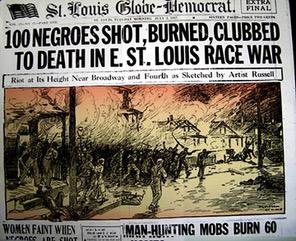GJR book review: Media’s sharp words leave deep cuts in society
Race-Baiter: How the media wields dangerous words to divide a nation
Author: Eric Deggans
Publisher: Palgrave Macmillan, New York, 2012
Hardcover: $28, 228 pages
When conservative pundit Bill O’Reilly called him “one of the biggest race-baiters in the country,” Eric Deggans turned the epithet into the title for his new book, “Race-Baiter: How the media wields dangerous words to divide a nation.”
Deggans, a TV and media critic for the Tampa Bay Times, also is a contributor to NPR, CNN.com and the Huffington Post, and he has appeared on MSNBC’s “Countdown,” CNN’s “Piers Morgan Tonight,” PBS “News Hour,” and Fox New Channel’s “Fox and Friends” and “Hannity and Colmes.” His new book addresses the use of modern media’s powerful techniques to divide Americans by fueling fears, reinforcing prejudices and promoting hate while reaping huge profits and manipulating politicians.
Deggans writes that mass media no longer are a uniting force in America, as was the case when three television networks each sought wide and diverse audiences, effectively creating a shared cultural dialogue. Conservative cable news channels use a “success-by-segmentation” strategy that demonizes other news outlets and feeds on deep-rooted fears to maintain their fiercely loyal audiences – and, along with right-wing radio and conservative Internet sites, create an illusory sense of perspective for viewers. In fact, they are all recycling the same limited ideas and opinions.
Deggans writes that the popularity of cable TV news, radio talk shows and partisan online media further divide an already segmented population. But, he adds, the popularity of cable news is well substantiated. As an example, he cites MSNBC anchor Lawrence O’Donnell who, while speaking at a 2010 press reception, said the audience members have voted, and they want to watch political opinion shows rather than hard news.
According to a 2011 Pew Center report, Deggans writes, when asked what first comes to mind when they think of a news organization, 63 percent of Americans will name a cable news network, mostly CNN and Fox. Only a third will name a broadcast network.
Another factor driving the cable news boom is that it is easier and cheaper to fill the cable news stations with opinions rather than news.
The book, written and published before the 2012 presidential election, discusses how news events involving African-Americans and other minorities are covered by partisan media in a manner that reinforces the racial biases of their niche audiences. Each chapter was thoroughly and painstakingly researched, and Deggans strongly supports his positions with ample documentation.
One example is when MSNBC’s Al Sharpton galvanized the country with his coverage of the 2012 shooting death of unarmed African-American teenager Trayvon Martin by a Hispanic neighborhood watchman who claims he acted in self-defense.
Deggans writes that the early work done by Sharpton and other journalists of color propelled the story to international attention. Divisive elements in the media subsequently dwelt on the fact Martin was wearing a “hoodie” and smoked marijuana – which, in the minds of some right-wing extremists, was enough justification for the shooter to act in self-defense.
He also writes about U.S. Department of Agriculture’s Shirley Sherrod, who was vilified by the media, condemned by the NAACP and forced to resign her appointed position by the Obama administration because excerpts of a speech she delivered at an NAACP convention were cherry-picked by Tea Party activist Andrew Breitbart in his quest to portray Sherrod as a bigot.
Other chapters cover Deggan’s insights about the propaganda techniques used by partisan media to gain and preserve viewership, how the media’s racialization of poverty fuels the conservative narrative that people are poor because they’re lazy and why the audience for hate radio, long dominated by angry ultra conservatives, is declining due to a changing demographic in America.
Deggans has written an easy-to-read book about a difficult topic. He writes that many Americans think the election of President Obama heralded a post-racial era – but, in fact, race issues are more complex than ever because of partisan media that seeks to divide, rather than unite, the public.
In his summary chapter, he describes today’s “media ecology,” in which people get their news from a host of websites, broadcast outlets and social media platforms, all outfitted with customized content suited to their own personal worldviews. There’s very little incentive for people to hear or read opinions that challenge their own beliefs.
Deggans concludes that increased media literacy is the pathway to a real national conversation about race, prejudice and sexism. In the final pages of the book, he discusses the accomplishments of Media Matters and other groups that ferret out and correct misinformation propagated by conservative media.
More of the author’s proposals for reversing polarization by expanding media awareness, such as a concerted effort to ensure media literacy programs are part of the curriculum in all public schools, would have been a welcome addition to this otherwise highly informative and entertaining book.
America faces an insidious threat: the hyperpolarization of citizens who elect officials unwilling to compromise for fear of losing their jobs. Educating citizens about the very points Deggans made in “Race-Baiter’ – how big media profit by peddling hate and fear and why this phenomenon is eroding democracy – should be a national priority.
